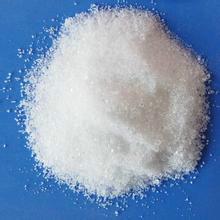 What is D-xylose?
What is D-xylose?
D-xylose is mainly used as a raw material for xylitol in my country. It has been produced for nearly 40 years. The recognition of xylitol is much higher than that of D-xylose. Internationally, Japan has approved D-xylose as a non-calorie sweetener in the 1960s, while Japan only approved xylitol as a pharmaceutical raw material, processed into injections, and widely used as a metabolic therapy for diabetics. Enter the food field. It was not until 1997 that Japan approved xylitol as a food additive, so the earliest country to use D-xylose as a food additive was Japan. In the United States, FEMA lists D-xylose as a recognized food additive.
In recent years, D-xylose and xylitol have been used in large-scale food applications at home and abroad, and their safety has also been verified. D-xylose and xylitol can be used as sweeteners in the list of pharmaceutical excipients. The majority of pharmaceutical companies provide another option for innovative drug research and development.

 What are the characteristics of D-xylose?
What are the characteristics of D-xylose?
The sweetness and flavor are similar to those of glucose, and can improve the flavor and taste of sweets. At a concentration of 10%, the sweetness is about 70% of that of sucrose, but when the concentration of xylose increases, the relative sweetness also increases. For example, when the concentration is 15%, the sweetness is 74.7% of sucrose, and when the concentration is 20%, the sweetness is 82.7% of sucrose. When xylose is used in combination with other sweeteners, it can improve the taste and inhibit peculiar smell.
Similar physical properties to glucose. All kinds of food that originally use glucose can be simply replaced by xylose: except the sweetness and glucose are similar, other including melting point, solubility, taste are similar. Therefore, it can replace glucose almost 1:1 to produce various low-calorie foods suitable for diabetics and obese patients, and the taste is good.
Xylitol is present in a variety of fruits, vegetables, and cereals, but in very low amounts.
Xylitol is white crystal or crystalline powder.
Xylitol is as sweet as sucrose.
Xylitol is only about 60% of the calories of sucrose, and the energy label is 10kJ/g.
Xylitol is very soluble in water, can absorb a lot of heat when dissolved in water, and produce a cool feeling when eating.
Xylitol is chemically stable and does not undergo Maillard reaction and caramelization reaction.
In China, my country's national standard for D-xylose (GB/T23532-2009) has also been officially implemented on November 1, 2009. The standard revision adopts the xylose quality standards of British Pharmacopoeia BP2007 and United States Pharmacopoeia USP30, and based on its basis has improved. This has promoted the development of food-grade xylose in the food and pharmaceutical fields in China.
Xylitol has been approved as a food additive in China, the United States, the European Union, Japan and other countries and regions; the US FDA has approved xylitol as a "generally safe substance" to allow its use in food; the European Economic Union Food Science Committee believes that wood Sugar alcohols can be used for a long time; the Food and Agriculture Organization of the World (FAO) and the World Health Organization (WHO) Expert Committee on Food Additives Regulations (JECFA) have approved xylitol as a Class A food additive, and determined that its ADI value is not regulated as a safe food.
my country is a big agricultural country, rich in raw material resources, broad market, and unique development conditions. In the next few years, the demand for D-xylose and xylitol will grow by leaps and bounds. With the development of economy, people's life will gradually change from subsistence type to nutrition and health care type. Food grade D-xylose and xylitol become inevitable trend of future development.